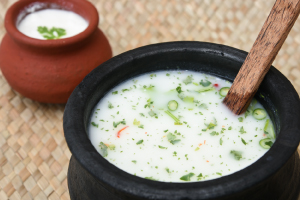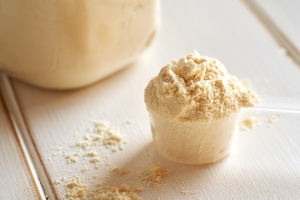

Bread is a baked food item which is one of the most popular breakfast options for everyone. It is commonly consumed in different forms, such as bread omelettes, bread toast and sandwiches, all over the world. Generally made from wheat or other grains, this baked food product comes in different types, such as white bread, brown bread and multi-grain bread. However, say its brown bread or white bread -both are commonly used, and in terms of texture, taste and nutrition, they are different from each other. So, let’s explore the difference between brown bread and white bread.
White Bread
White bread is prepared from wheat grains which comprises the endosperm part only, giving the bread its white colour. During processing, the bran and germ are detached from the grains. After the removal process of the bran and germ, the white flour is bleached using chemicals, like potassium bromate, benzoyl peroxide or chlorine dioxide. Hence, white bread is made of refined wheat flour through a highly processed method, making it high in starch and low in most of the nutrients.
Brown Bread
Brown bread is prepared from the entire parts of the wheat grains, including the bran, endosperm and germ. The bran is high in fibre, endosperm carries proteins and carbohydrates, and the germ has rich vitamins and minerals, which makes it more fibre and nutrients than white bread.
The method of making brown bread does not include the processing of wheat grains so it is unbleached or unrefined whole wheat flour. Though entire parts of the wheat grain are used to prepare the brown bread, it is also termed whole wheat bread.
Now that the understanding of making brown bread or white bread is clear, let’s explore the major difference between brown vs white bread.
Key Difference Between White Bread and Brown Bread
Bread is a common item which can be consumed anytime and anywhere with butter, peanut butter, and customising it on your own choice. When it comes to counting the calories on brown bread or white bread which is better, you will not get much difference between them, though you might get more nutrients in brown bread vs white bread. Here are some major key differences between white bread and brown bread:
Brown Vs White Bread
| Brown Bread | White Bread |
|
|
|
|
|
|
|
|
|
|
Side Effects of White Bread and Brown Bread
Now that you know the difference between white bread and brown bread, let’s understand their side effects if consumed regularly.
White Bread Side Effects:
Consuming too much white bread can have some side effects, such as:
- Increase in Blood Sugar Levels
- Digestive Issues
- Weight Gain
- Nutrient Deficiency
- Inflammation in the Body
Brown Bread Side Effects:
Brown bread can also have some side effects if consumed too much, such as:
-
- It contains high insoluble fibre that may cause gastrointestinal issues for people with irritable bowel syndrome (IBS), like bloating, constipation and abdominal pain.
- As it is made with barley malt which is sweet in taste, it cannot be suitable for diabetic people.
- There are some cheap bakers who add artificial food additives and a high quantity of colour (INS 150a) to appear like authentic brown bread- consuming it regularly may deteriorate health.
Conclusion
Bread is an ancient food product that has been with us for ages and is still considered a part of our main breakfast option in many cultures globally. So, you must be wondering, brown bread or white bread, which is better? If it is related to calorie content, then there is not much difference between both types of bread. However, when it comes to nutrients, brown bread undeniably has rich nutrients in comparison to white bread.
But it should be kept in mind that all brown breads available in the market are not healthy because some of the brown bread may contain added colors (INS 150a), known as caramel colour. And if you started relying on choosing any random brown bread, there won’t be any nutritional benefits of consuming it over white or maida bread. Hence, if you prefer to eat brown bread, then check the term ‘whole wheat’ mentioned; this means that the bran and germ of the wheat grains are included in it.




